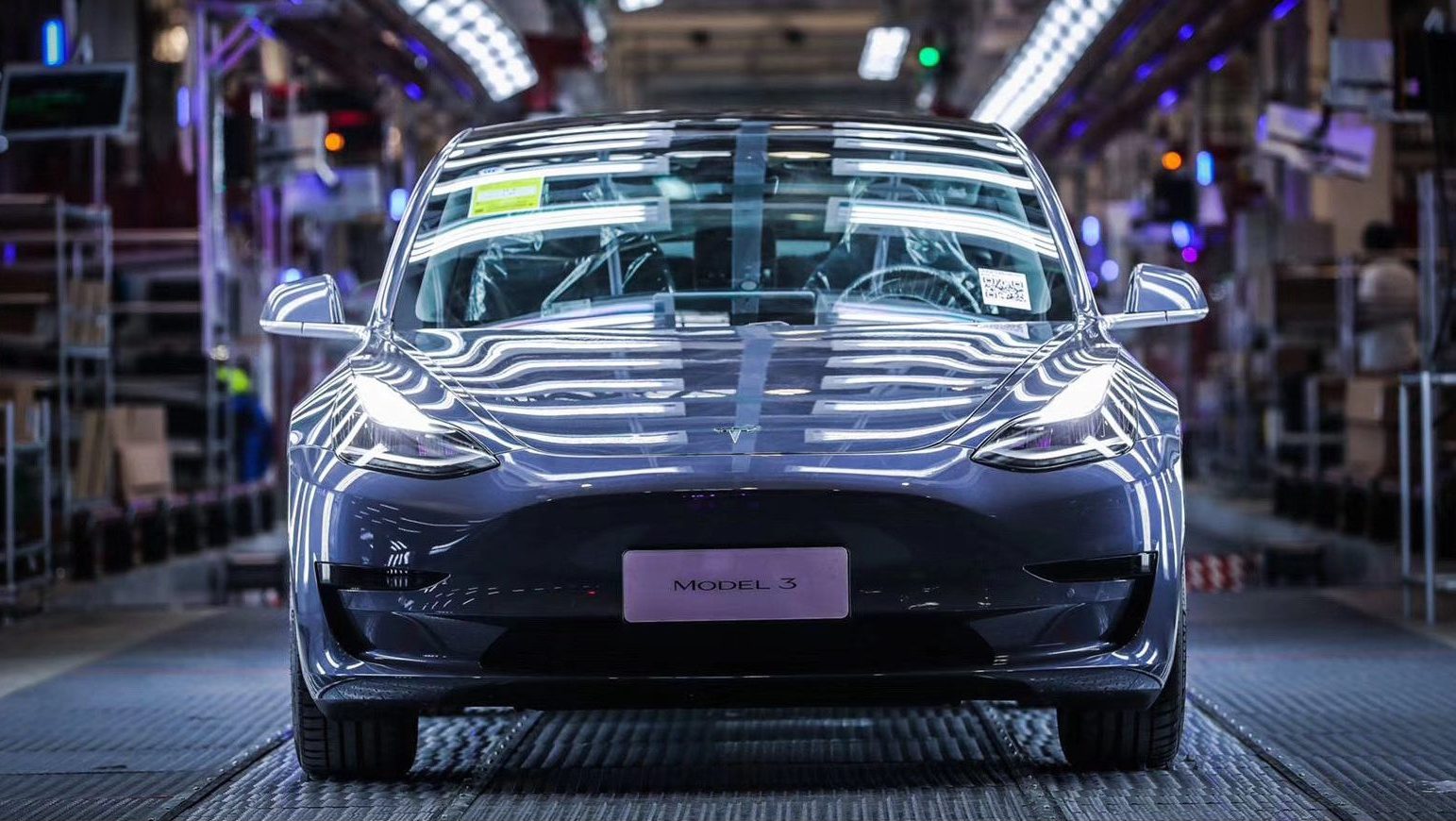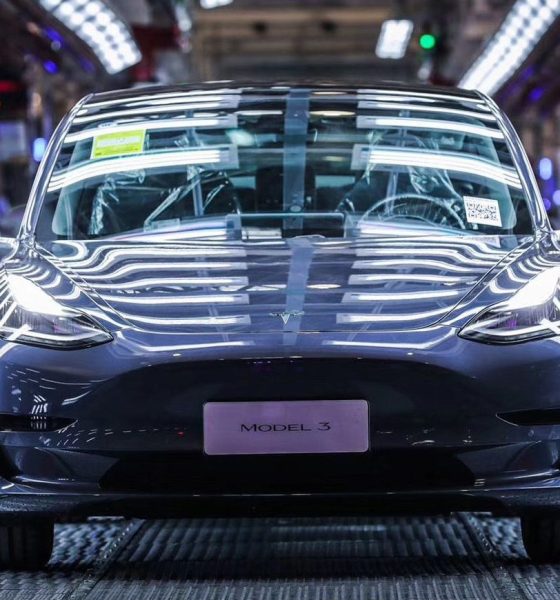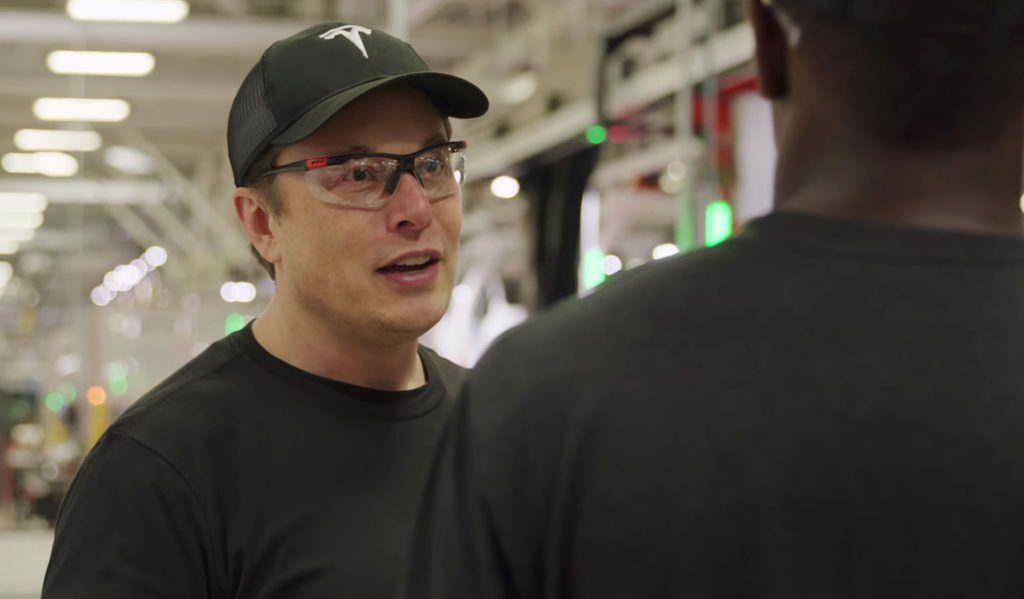

News
Tesla is becoming the company of choice for next-generation auto workers
Tesla’s first handover ceremony for its Made-in-China Model 3 in Gigafactory 3 was memorable for a variety of reasons. For one, it proved that Tesla could meet or even exceed the already-ambitious goals of CEO Elon Musk. It was also an event that was made extra special when a young GF3 worker decided to propose to his partner with his blue MIC Model 3.
The scene is representative of a trend that seems to be present in Tesla’s ranks: the company is becoming the de facto carmaker of choice for the next generation of auto workers. Gigafactory 3’s workers who were present at the handover ceremony were mostly young. This extends to the company’s executives as well. Unlike conventional executives from legacy auto, who are populated by veterans who have been in the business for decades, Tesla’s executives are young, aggressive, and even a tad bit ambitious.
This observation was mentioned by Tesla owner-enthusiast @Ray4Tesla in a tweet following the handover event in Shanghai. Several executives from Tesla attended the MIC Model 3 delivery event, and all of them were in their 30s and 40s. They were articulate, energetic, and seemingly very motivated. In a way, the energy exuded by Tesla China’s executives was fitting for a company whose mission is literally to accelerate the advent of sustainability.
Tesla’s allure for young professionals is not just limited to China. Recent comments from Jorg Steinbach, the Economics Minister of Brandenburg, suggested that Germany may be looking to Tesla to attract young talent as well. “I am optimistic that young people from all over Germany and far beyond want to take part in this project,” he said, adding that the arrival of the electric car maker could allow the region’s workers to future-proof their jobs.
Perhaps it’s Tesla’s disruptive nature, or its startup nature, but the company continues to rank high among young job seekers. Working at Tesla is notoriously challenging, filled with long hours and hyper-ambitious targets. It’s essentially a Silicon Valley startup, but instead of a mobile app or an internet-based service, the company’s product happens to be electric cars and battery storage devices. Stories from former workers at Tesla tell of intense work environments and sudden changes of pace. Yet, it is also one that the best and brightest find very difficult to pass up.

Employer branding specialist Universum’s 2019 survey found that Tesla and SpaceX, two of CEO Elon Musk’s companies, are perceived by engineering students as the best employers in the country. For many young workers, particularly those whose idealism is still intact, there are few companies in the world worth working for, and one of them happens to be Tesla. Overall, it appears that for many of these young workers, the challenges that come with a job at Tesla are well worth it.
Another reason for this is likely Tesla CEO Elon Musk. Bold and daring, Musk has been compared by the media to billionaire-genius-superhero Tony Stark/Iron Man. Just like the fictional Stark, Musk barrels through his projects with an intensity that’s near-obsessive, and at times, with seemingly little regard for his personal safety. While conventional auto CEOs are thought to spend their days behind a desk and at meetings, Musk is out on the roads testing the limits of Autopilot and Full Self-Driving on his personal vehicle. Musk is also known to get his hands dirty when needed, with the CEO being spotted torquing bolts with Tesla’s workers during the buildout of Tesla’s GA4 line for the Model 3 in the Fremont factory.
Ultimately, it is quite inspiring to work for a company whose goal is not just to make money every quarter, but one that fights a far more important battle. It is also inspiring to work under a leader who puts himself in the front lines. This certainly seems to be the case, with a survey from job search marketplace Hired indicating that Musk is currently perceived by job seekers as the most inspiring leader in tech. This is something that has been noticed by veteran Shark Tank judge Kevin O’Leary, better known by his tongue-in-cheek nickname, Mr. Wonderful, as well.

Prior to being a TSLA investor, O’Leary had been critical of the electric car maker. But one of the tipping points for the investing veteran came after watching electric vehicle races that involve engineering students from various schools. Automakers would usually send their HR teams to these races, in an effort to attract up-and-coming talent. But after each race, the Shark Tank judge realized that the winning teams all head over to one company: Tesla. This, according to O’Leary, is a big advantage for the electric car maker.
“Every one of these engineers, the smoking hot kids that sit with their cars, the men and women that sleep with them for 24 hours a day; it’s an unusual culture I’ve never seen before. They all want to work at Tesla. Why? Because the teams are six to eight people. If they go to a legacy car company, they get drowned out in the back somewhere. These smart, young, men and women make a big difference as interns. I can’t believe the access to talent they have,” O ‘Leary said.
With this in mind, it appears that Tesla’s future as an electric car maker is secured, at least with regards to its talent pool. Provided that the company maintains its course, and its leadership remains as motivated, there is very little doubt that the disruptor from Silicon Valley could attract the best and brightest workers when needed.

Elon Musk
Elon Musk confirms xAI’s purchase of five 380 MW natural gas turbines
The deal, which was confirmed by Musk on X, highlights xAI’s effort to aggressively scale its operations.

xAI, Elon Musk’s artificial intelligence startup, has purchased five additional 380 MW natural gas turbines from South Korea’s Doosan Enerbility to power its growing supercomputer clusters.
The deal, which was confirmed by Musk on X, highlights xAI’s effort to aggressively scale its operations.
xAI’s turbine deal details
News of xAI’s new turbines was shared on social media platform X, with user @SemiAnalysis_ stating that the turbines were produced by South Korea’s Doosan Enerbility. As noted in an Asian Business Daily report, Doosan Enerbility announced last October that it signed a contract to supply two 380 MW gas turbines for a major U.S. tech company. Doosan later noted in December that it secured an order for three more 380 MW gas turbines.
As per the X user, the gas turbines would power an additional 600,000+ GB200 NVL72 equivalent size cluster. This should make xAI’s facilities among the largest in the world. In a reply, Elon Musk confirmed that xAI did purchase the turbines. “True,” Musk wrote in a post on X.
xAI’s ambitions
Recent reports have indicated that xAI closed an upsized $20 billion Series E funding round, exceeding the initial $15 billion target to fuel rapid infrastructure scaling and AI product development. The funding, as per the AI startup, “will accelerate our world-leading infrastructure buildout, enable the rapid development and deployment of transformative AI products.”
The company also teased the rollout of its upcoming frontier AI model. “Looking ahead, Grok 5 is currently in training, and we are focused on launching innovative new consumer and enterprise products that harness the power of Grok, Colossus, and 𝕏 to transform how we live, work, and play,” xAI wrote in a post on its website.
Elon Musk
Elon Musk’s xAI closes upsized $20B Series E funding round
xAI announced the investment round in a post on its official website.

xAI has closed an upsized $20 billion Series E funding round, exceeding the initial $15 billion target to fuel rapid infrastructure scaling and AI product development.
xAI announced the investment round in a post on its official website.
A $20 billion Series E round
As noted by the artificial intelligence startup in its post, the Series E funding round attracted a diverse group of investors, including Valor Equity Partners, Stepstone Group, Fidelity Management & Research Company, Qatar Investment Authority, MGX, and Baron Capital Group, among others.
Strategic partners NVIDIA and Cisco Investments also continued support for building the world’s largest GPU clusters.
As xAI stated, “This financing will accelerate our world-leading infrastructure buildout, enable the rapid development and deployment of transformative AI products reaching billions of users, and fuel groundbreaking research advancing xAI’s core mission: Understanding the Universe.”
xAI’s core mission
Th Series E funding builds on xAI’s previous rounds, powering Grok advancements and massive compute expansions like the Memphis supercluster. The upsized demand reflects growing recognition of xAI’s potential in frontier AI.
xAI also highlighted several of its breakthroughs in 2025, from the buildout of Colossus I and II, which ended with over 1 million H100 GPU equivalents, and the rollout of the Grok 4 Series, Grok Voice, and Grok Imagine, among others. The company also confirmed that work is already underway to train the flagship large language model’s next iteration, Grok 5.
“Looking ahead, Grok 5 is currently in training, and we are focused on launching innovative new consumer and enterprise products that harness the power of Grok, Colossus, and 𝕏 to transform how we live, work, and play,” xAI wrote.
Investor's Corner
Tesla gets price target bump, citing growing lead in self-driving

Tesla (NASDAQ: TSLA) stock received a price target update from Pierre Ferragu of Wall Street firm New Street Research, citing the company’s growing lead in self-driving and autonomy.
On Tuesday, Ferragu bumped his price target from $520 to $600, stating that the consensus from the Consumer Electronics Show in Las Vegas was that Tesla’s lead in autonomy has been sustained, is growing, and sits at a multiple-year lead over its competitors.
CES 2026 validates Tesla’s FSD strategy, but there’s a big lag for rivals: analyst
“The signal from Vegas is loud and clear,” the analyst writes. “The industry isn’t catching up to Tesla; it is actively validating Tesla’s strategy…just with a 12-year lag.”
The note shows that the company’s prowess in vehicle autonomy is being solidified by lagging competitors that claim to have the best method. The only problem is that Tesla’s Vision-based approach, which it adopted back in 2022 with the Model 3 and Model Y initially, has been proven to be more effective than competitors’ approach, which utilizes other technology, such as LiDAR and sensors.
Currently, Tesla shares are sitting at around $433, as the company’s stock price closed at $432.96 on Tuesday afternoon.
Ferragu’s consensus on Tesla shares echoes that of other Wall Street analysts who are bullish on the company’s stock and position within the AI, autonomy, and robotics sector.
Dan Ives of Wedbush wrote in a note in mid-December that he anticipates Tesla having a massive 2026, and could reach a $3 trillion valuation this year, especially with the “AI chapter” taking hold of the narrative at the company.
Ives also said that the big step in the right direction for Tesla will be initiating production of the Cybercab, as well as expanding on the Robotaxi program through the next 12 months:
“…as full-scale volume production begins with the autonomous and robotics roadmap…The company has started to test the all-important Cybercab in Austin over the past few weeks, which is an incremental step towards launching in 2026 with important volume production of Cybercabs starting in April/May, which remains the golden goose in unlocking TSLA’s AI valuation.”
Tesla analyst breaks down delivery report: ‘A step in the right direction’
Tesla has transitioned from an automaker to a full-fledged AI company, and its Robotaxi and Cybercab programs, fueled by the Full Self-Driving suite, are leading the charge moving forward. In 2026, there are major goals the company has outlined. The first is removing Safety Drivers from vehicles in Austin, Texas, one of the areas where it operates a ride-hailing service within the U.S.
Ultimately, Tesla will aim to launch a Level 5 autonomy suite to the public in the coming years.








